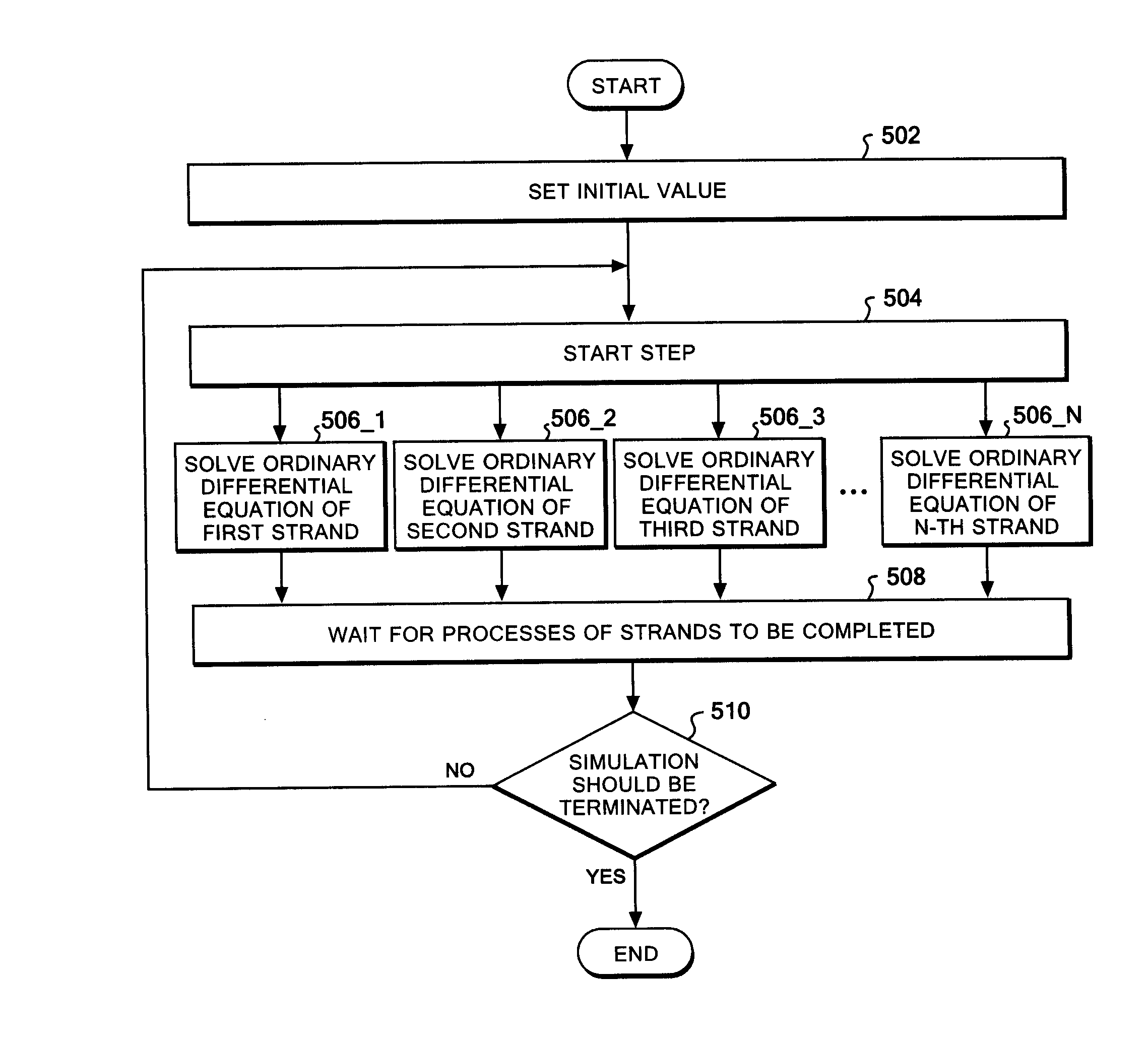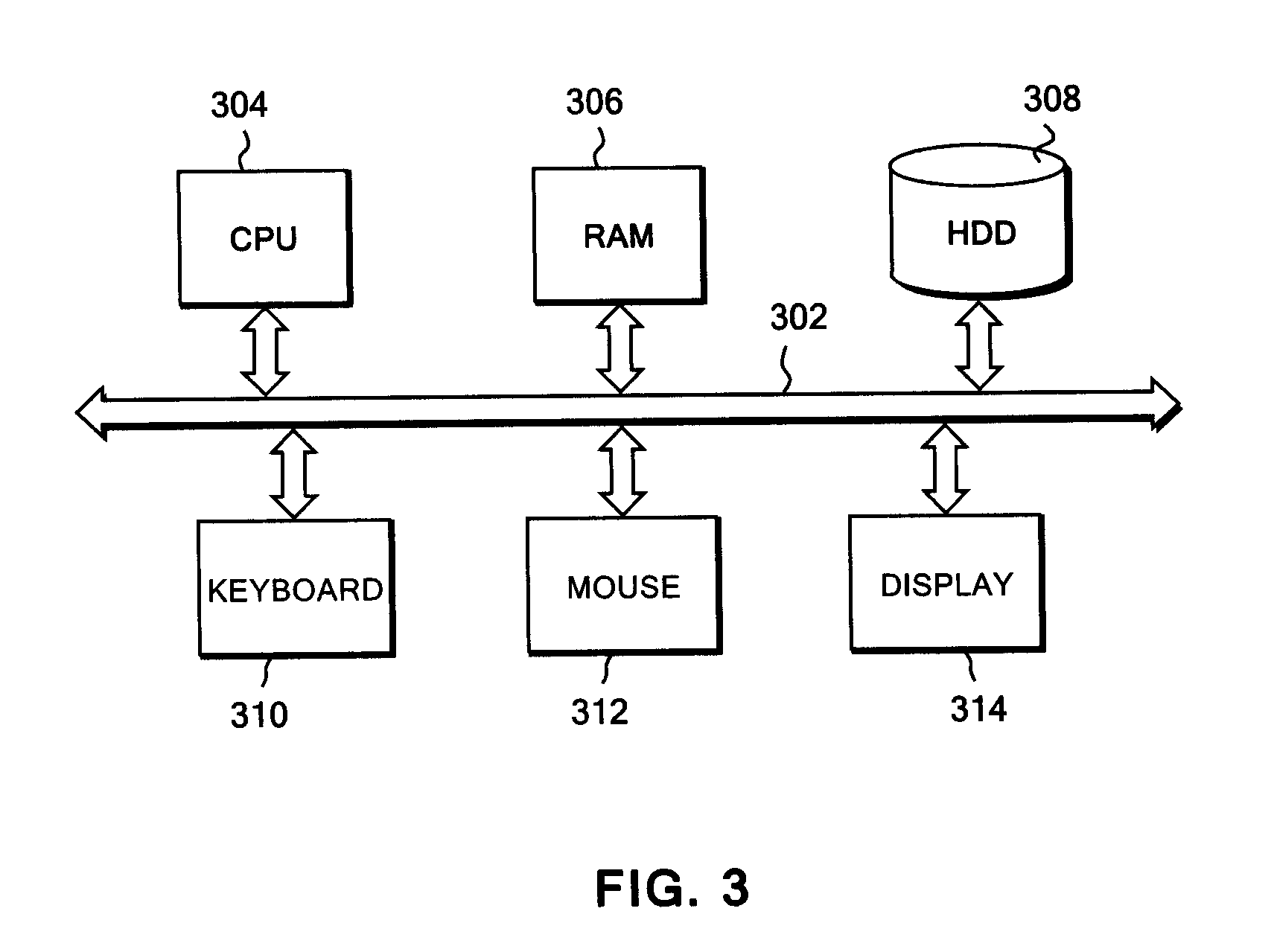Method, program, and system for solving ordinary differential equation
- Summary
- Abstract
- Description
- Claims
- Application Information
AI Technical Summary
Benefits of technology
Problems solved by technology
Method used
Image
Examples
Embodiment Construction
[0040]The basic principle of the invention is computing simultaneous ordinary differential equations in accordance with an embedded Runge-Kutta method such that a computer has only to execute recomputation of a strand in which an error larger than a threshold has occurred. This reduces the amount of computation, thus enabling a faster process.
[0041]Detailed description of the invention is made in combination with the following embodiments. In the following description, the same components are denoted by the same reference numerals throughout the drawings unless otherwise noted. In addition, the following configuration and the process are described merely as an embodiment of the present invention. Thus, it is to be understood that the technical scope of the present invention is not intended to be limited to this embodiment.
[0042]In a first aspect, the present invention is based on a method of solving ordinary differential equations through numerical computation by a computer using an...
PUM
 Login to View More
Login to View More Abstract
Description
Claims
Application Information
 Login to View More
Login to View More - R&D
- Intellectual Property
- Life Sciences
- Materials
- Tech Scout
- Unparalleled Data Quality
- Higher Quality Content
- 60% Fewer Hallucinations
Browse by: Latest US Patents, China's latest patents, Technical Efficacy Thesaurus, Application Domain, Technology Topic, Popular Technical Reports.
© 2025 PatSnap. All rights reserved.Legal|Privacy policy|Modern Slavery Act Transparency Statement|Sitemap|About US| Contact US: help@patsnap.com



